
ABOUT THE PHOTOGRAPHER
Stefano Unterthiner is an award-winning Italian photographer, specialising in the life stories of animals in the wild. He also focuses on conservation and environmental issues, particularly human-wildlife conflict and coexistence. See more of his work at: stefano unterthiner.com.
Rock stars
Mareeba rock-wallabies pause among the boulders of Granite Gorge Nature Park, northern Queensland. Weighing under 5kg, this is one of the smallest of about 50 marsupial species of the macropod ('big foot') family in Australia, including four species of kangaroo, plus wallabies, wallaroos and pademelons.
Night vision
Most marsupials - including this eastern grey kangaroo, photographed under a full moon in Murramarang National Park, New South Wales - are largely nocturnal or crepuscular, resting in shade during the day. Sexual dimorphism is also common: male eastern greys can weigh over 60kg, twice as much as females.
Snout and about
Curious Mareeba rock-wallabies check out Stefano's lens in Granite Gorge Nature Park. Among the most social of macropods, this rare species its range limited to a small area of Queensland - forms groups of several dozen individuals.
Fight club
tussle at Eastern grey kangaroos Halls Gap in Grampians National Park, Victoria. Males 'box' with their front paws to establish dominance, the strongest being the most likely to mate with a receptive female. "This pair seemed to be play fighting, as if in training for serious combat," says Stefano. "When you've seen big males really battling in earnest, you know the difference!"
Forest forager
Denne historien er fra August 2022-utgaven av BBC Wildlife.
Start din 7-dagers gratis prøveperiode på Magzter GOLD for å få tilgang til tusenvis av utvalgte premiumhistorier og 9000+ magasiner og aviser.
Allerede abonnent ? Logg på
Denne historien er fra August 2022-utgaven av BBC Wildlife.
Start din 7-dagers gratis prøveperiode på Magzter GOLD for å få tilgang til tusenvis av utvalgte premiumhistorier og 9000+ magasiner og aviser.
Allerede abonnent? Logg på

SNAP-CHAT
Justin Gilligan on giant spider crabs and holding hands with an octopus
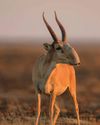
STEPPE CHANGE
Herds of saiga have returned to Kazakhstan, but there's a fine balance to tread
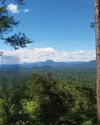
TREES FOR LIFE
Community is at the heart of conservation in the tropical forests of southern Belize
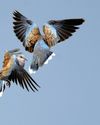
WHEN DOVES CRY
Turtle doves are now the UK's fastest declining bird species, but the RSPB is on a mission to save them

SURVIVAL OF THE CUTEST
We can't help being drawn to cute creatures, but our aesthetic preferences both help and hinder conservation
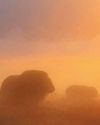
LIGHT ON THE NORTH
Spectacular images of Arctic foxes, reindeer and musk oxen reveal the wild beauty and diversity of Scandinavia
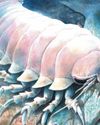
ROLLING IN THE DEEP
The super-sized crustacean that lives in the deepest, darkest ocean
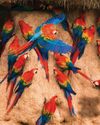
LET'S GET TOGETHER
Clay licks deep in the Amazon explode in a riot of colour, with macaws the stars of the show

FEMALE OF THE SPECIES
To sponge or not to sponge? That is the question for the bottlenose dolphins (Tursiops aduncus) living in Shark Bay, Western Australia.
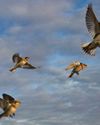
7 nature encounters for the month ahead
WITH NATURALIST AND AUTHOR BEN HOARE